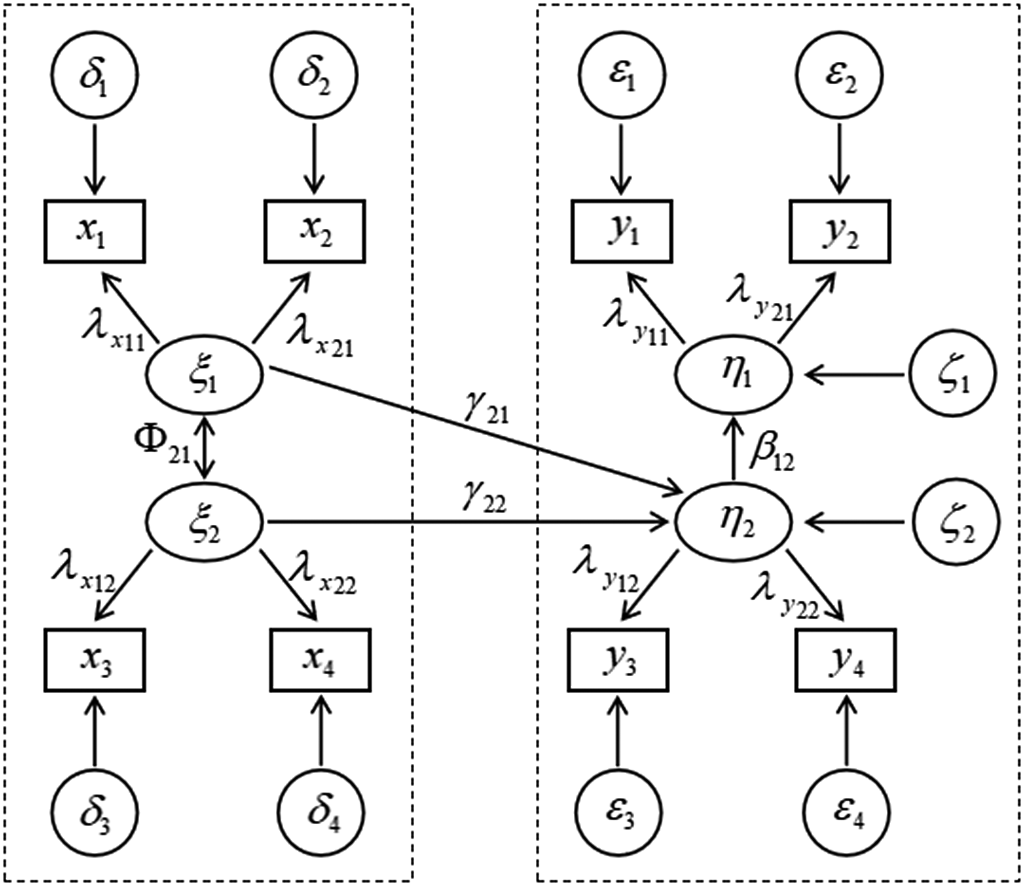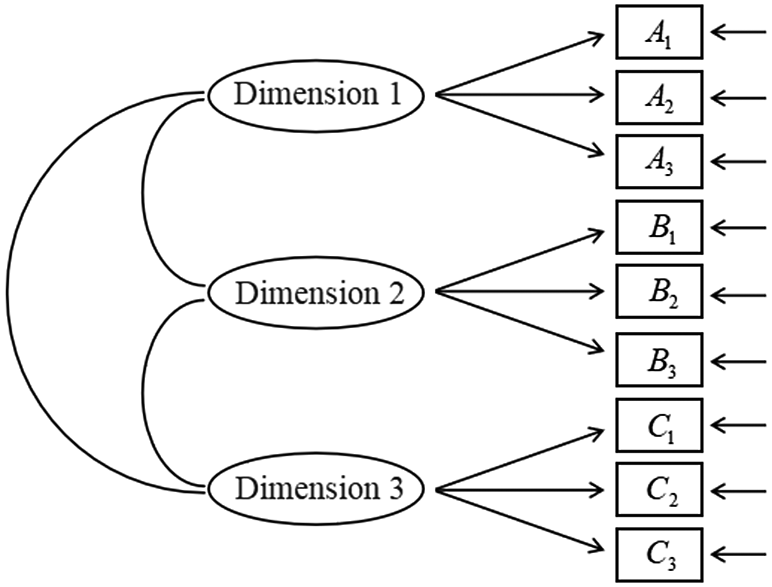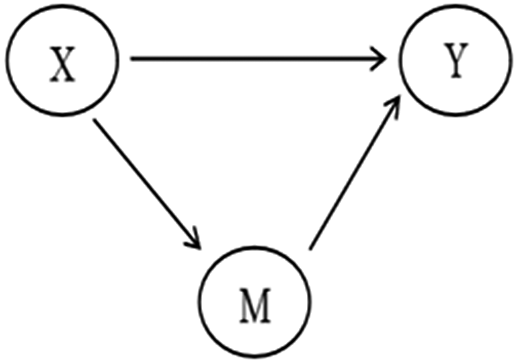Article contents
The application of structural equation model in psychological research
Published online by Cambridge University Press: 09 March 2023
Abstract
The development of social science is inseparable from the development of research methods. The traditional research methods such as factor analysis, regression analysis, and classical measurement theory cannot meet the professional development of modern disciplines. Therefore, a new generation of statistical analysis methods came into being, among which the most prominent development is the development and application of structural equation. Structural equation model is a statistical method that represents the theory with a corresponding linear equation system on the basis of the existing theory. It makes up for the shortcomings of traditional statistical methods, deals with the relationship between multiple causes and results, and measures variables that cannot be directly observed. Structural equation model has become an important tool in multivariate data analysis, which is widely used in social science data analysis, especially in the fields of education and psychology.
As a research method based on statistical analysis technology, structural equation model can be used to deal with the exploration and analysis of complex multivariable research data, estimation of latent variables, parameter estimation, and fitting degree estimation of complex independent variables and dependent variables prediction model at the same time. The complete structural equation model includes two parts: measurement model and structural model. The measurement model describes the relationship between latent variables and actual measured variables, while the structural model describes the relationship between latent variables.Figure 1.
Diagram of the full structural equation model

As shown in Figure 1, a complete structural equation model, the lambda said the relationship between the observed variables and latent variables, gamma said the relationship between exogenous variables and endogenous potential, beta said the relationship between endogenous latent variable, the delta said exogenous variables to explain the latent variables incomplete measuring residual, epsilon says endogenous variable to explain the latent variables measuring residual incomplete; ζ represents the estimated residuals of endogenous latent variables that cannot be fully explained. Figure 1 shows the relationship between exogenous variables on the left and endogenous variables on the right. the complete structural model is composed of γ and β parameters. The relationship between various variables and parameters involved in Figure 1 can be described by a general linear equation:
The relationship between specific variables and specific parameters in Figure 1 can be described by the following two equations:
From the above overview, it is not difficult to find that if there is no assumption of latent variables in a structural equation model, only the measured variables, then it is no different from the traditional path analysis model. Therefore, in general, the structural equation model can not only deal with the estimation of multiple regression equations at the same time, but also make the processing of variable relations more elastic. Anyhow, structural equation modeling following the general linear model of multivariate analysis to verify model analysis, can put the variance analysis, regression analysis, path analysis, factor analysis of traditional statistical methods, such as included in the model, the structural equation modeling and investigation and experiment analysis can be used, therefore more extensive applicability.
Although structural equation model has obvious advantages over traditional statistical methods, it still has limitations, and it is conditional in psychological research.
First, different theoretical assumptions, if the same variables, can be used to construct multiple models. But the more variables you have, the more models you can combine. This will bring difficulty to the test of model fit. Therefore, the use of structural equation model should pay more attention to theoretical discussion, and should be based on the exact theory or reasonable logical reasoning.
Second, in psychological research, if only data are used to explore the causal relationship between latent variables without special design, no statistical method, including structural equation model, can prove whether there is a causal relationship between variables. Therefore, in order to model causality between variables using structural equations, it is necessary to control the design of longitudinal structural equation patterns to help determine causality.
Third, the introduction of latent variables into structural equation model is originally an advantage of structural equation model, which can solve the shortcomings of univariate measurement in the past. However, whether such measurement truly reflects latent variables or whether indicators can truly represent latent variables is a problem worthy of attention.
Fourth, structural equation modeling analysis of demand is a linear relationship between variables, but in many cases, this requirement is difficult to guarantee, and even sure is a linear relationship between variables, the researchers could not put all the variables and the relationship between the built into the theoretical construction, so the data fitting is its support for the theoretical construction, but it can’t prove the correctness of the theoretical construction.
The analysis process of structural equation model generally includes the following steps:
Step 1: Model construction
The model construction includes specifying: The relationship between observed variables and latent variables; The relationship between the latent variables; In complex models, the value or relationship of parameters such as factor loading or factor correlation coefficient can be limited.
Step 2: Model identification
Identifying the specified model is an important stage in building the structural equation model. Model identification focuses on whether a unique estimate can be obtained from the observed data. If there is a non-identifiable parameter in the model, the model is a non-identifiable model, and the model cannot be estimated. In order to make the model recognizable, it is usually necessary to check two necessary conditions: first, the degree of freedom cannot be negative; The second is that every latent variable in the model must have a measurement scale
Step 3: Model fitting
With a new model, it is required to find the solution of the model, the main is the estimation of the model parameters, this process is model fitting. If the fitting index reaches the standard, the model is well fitted.
Step 4: Model evaluation
If each parameter in the structural equation model is successfully estimated, the overall model can be evaluated. The evaluation of the model is to analyze the fitting of the hypothesized model with the actual observed data through different statistical procedures or the calculation of the fitting index. If the fitting degree of the model is not ideal, it means that the proposed hypothesis model has problems. At this time, it is necessary to adjust the parameter estimation content of the hypothesis model and fit it again until the model fit degree reaches the ideal level.
Structural equation models, as a major development in statistical methods, are being used more and more widely by researchers in the application of psychological research. the following are some common structural equation models.
Confirmatory factor analysis (CFA) models:
(1) The basic concept of confirmatory factor
Confirmatory factor analysis is used to test whether the factor structure defined by the hypothesis or theory can fit the corresponding data. In short, it is to test the hypothesized relationship between measured variables and latent variables, which is the most basic measurement part of structural equation modeling. The theoretical factor structure is considered valid if the hypothesized confirmatory factor analysis model fits the data.
(2) Examples of confirmatory factor analysis
In a structural equation model, it is confirmatory factor analysis if only the test of the measurement model is involved. We take the measurement of subjective well-being as an example to perform confirmatory factor analysis. The SWB measurement scale contains three dimensions, each dimension has three questions, a total of 9 questions. The hypothetical model of the measurement model is shown in Figure 2.Figure 2.
Hypothetical model of the confirmatory factor analysis model

Confirmatory factor analysis is to verify the degree of fit of the hypothesized model. After the analysis using relevant software, the path coefficient is used to measure the degree of influence or effect size between variables. If the fitting indices such as GFI value, RMSEA value and NFI value meet the required fit criteria, the model has a good fit and the quality of the questions is good. If the fit index did not meet the requirements, the model was modified and re-analyzed.
Path analysis:
(1) Basic concepts of path analysis
Path analysis is a technique for analyzing causal models. The main feature of path analysis is that it can estimate all the parameters of the model at the same time by taking advantage of the covariation of the measured variables, and test the fit between the theoretical model and the observed data in conjunction with the proposed specific hypothesis model to find the best model.
(2) Examples of path analysis
Some researchers have pointed out that path analysis is a complex model formed by a series of mediating effects. For example, there are many factors affecting SWB. We take attachment style as the influencing factor X and SWB as the dependent variable Y. There is at least one mediating variable M (loneliness) in the relationship between X and Y, which forms the mediating effect of X M Y. That is, the independent variable X influences the mediating variable M and then the dependent variable Y. As shown in Figure 3.Figure 3.
Mediating effect diagram

Integrated analysis model:
(1) The basic concept of integrated analysis model
Integrated model analysis refers to structural equation model analysis with both measurement model and structural model. Simply speaking, integrated model analysis can be considered as the synthesis of confirmatory factor analysis and path analysis, which takes into account both internal and external aspects and integrates the core concepts of both.
(2) Examples of integrated model analysis
Usually, a unified model analysis contains multiple latent variables, which can be used not only as exogenous and endogenous variables, but also as mediating variables. In the illustrative illustration of path analysis, we propose that the dependent variable X influences the independent variable Y by influencing the mediator variable M. In other words, the level of loneliness will affect the level of subjective well-being, but the level of loneliness will be affected by attachment style. As shown in Figure 4.Figure 4.
Figure of the integrated model of structural equations for individual subjective well-being

After assuming the model, model definition, parameter estimation and analysis should be carried out. After analysis, if all the fitting indices meet the fit criteria, then the model is good. If one item does not meet the fit criteria, the model still needs to be modified.
The wide application of structural equation model reflects the progress of data analysis and statistical methods. This new method of data analysis and statistics lays a methodological foundation for our comprehensive understanding and in-depth study of psychological phenomena. However, we should not blindly use this method, should fully grasp the basic principles of the constitutive equation model, applicable conditions to use this method, in order to give full play to the advantages of this method.
- Type
- Abstracts
- Information
- Copyright
- © The Author(s), 2023. Published by Cambridge University Press
- 2
- Cited by


